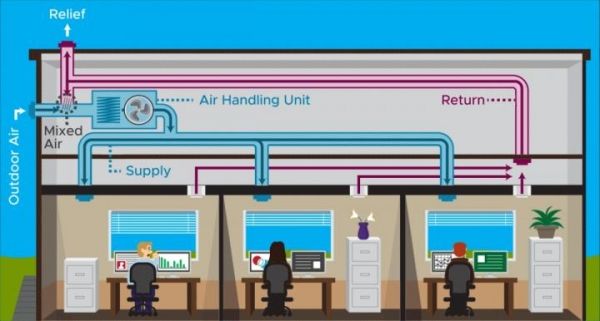Vigorous and rapid air exchanges might not always be a good thing when it comes to addressing levels of coronavirus particles in a multiroom building, according to a new modeling study.
The study suggests that, in a multiroom building, rapid air exchanges can spread the virus rapidly from the source room into other rooms at high concentrations. Particle levels spike in adjacent rooms within 30 minutes and can remain elevated for up to approximately 90 minutes.
The findings, published online in final form April 15 in the journal Building and Environment, come from a team of researchers at the U.S. Department of Energy’s Pacific Northwest National Laboratory. The team includes building and HVAC experts as well as experts in aerosol particles and viral materials.
“Most studies have looked at particle levels in just one room, and for a one-room building, increased ventilation is always useful to reducing their concentration,” said Leonard Pease, lead author of the study. “But for a building with more than one room, air exchanges can pose a risk in the adjacent rooms by elevating virus concentrations more quickly than would otherwise occur.
Read more at DOE/Pacific Northwest National Laboratory
Image: When the infected person in the office to the left coughs, respiratory droplets containing viral particles exit via the office's vent in the ceiling. Some droplets exit the building, while some are sent back into the building and into multiple rooms through the air-handling unit. A PNNL team found that a high ventilation rate can increase viral particle levels downstream of a source room. (Credit: Illustration/Animation: Cortland Johnson/Sara Levine, Pacific Northwest National Laboratory)


